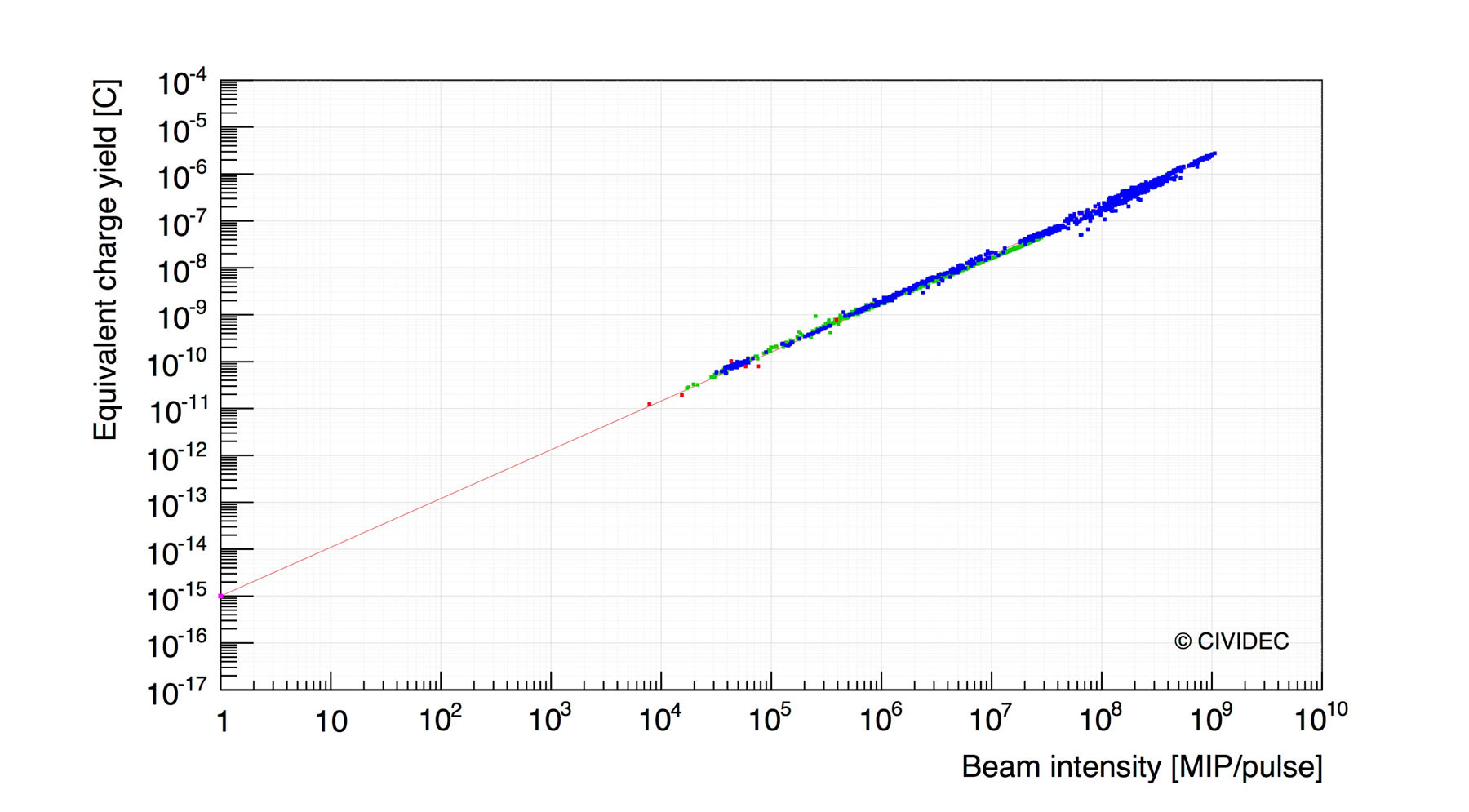B4 HIGH-RADIATION DIAMOND DETECTOR
Ultra-high Beam Losses
The B4 High-Radiation Diamond Detector is used for high-intensity beam loss measurements above 105 particles per bunch. This detector is designed for applications, where up to 109 particles ionize the detector simultaneously and the beam losses are measured in AC mode. Charging capacitors compensate for the detector discharge.

Linear response for very high intensities, even up to 109 particles per pulse.
FEATURES
Sensor material:
pCVD diamond with low charge efficiency
Sensor size:
5 mm diameter
Sensor thickness:
100 μm
Electrode size:
3 mm diameter
Application:
Bunched beam losses
OPTIONS
Depending on the beam intensity and the type of application the following options for the configuration of the signals are available:
- D4 Attenuator Set for high beam losses.
- C1 Broadband Amplifier, 2 GHz, 20 dB for medium beam losses.
- C2 Broadband Amplifier, 2 GHz, 40 dB for low beam losses.
ADDITIONAL PRODUCT INFORMATION

The excellent linearity of the B4 High-Radiation Diamond Detector over 5 orders of magnitude in beam intensity is shown in the Figure. The measurement was performed at the Beam Test Facility (BTF) of the Daphne accelerator complex in Frascati/Italy to test the detector for applications at the LHC and the HiRadMat facility at CERN.
DOWNLOAD THE PRODUCT INFORMATION

B4 High-Radiation Diamond Detector
RELEVANT PUBLICATIONS
Response of Polycrystalline Diamond Particle Detectors measured with a high Intensity Electron Beam
O. Stein, et al., Proceedings of IPAC2015, MOPTY058, 1069-1072, 2015
ISBN 978-3-95450-168-7
In Vacuum Diamond Sensor Scanner for Beam Halo Measurements in the Beam Line at the KEK Accelerator Test Facility
S. Liu, et al., NIMA, 832, 231-242, 2016
DOI:10.1016/j.nima.2016.06.122
An Experiment on Hydrodynamic Tunnelling of the SPS high Intensity Proton Beam at the HiRadMat Facility
J. Blanco Sancho, et al., Proceedings of HB2012, MOP241, 141-145, 2012
ISBN 978-3-95450-118-2
